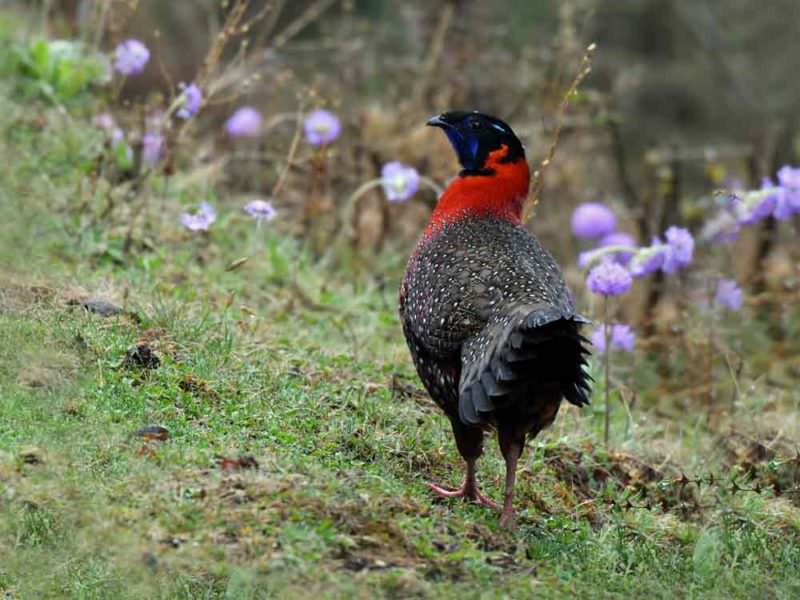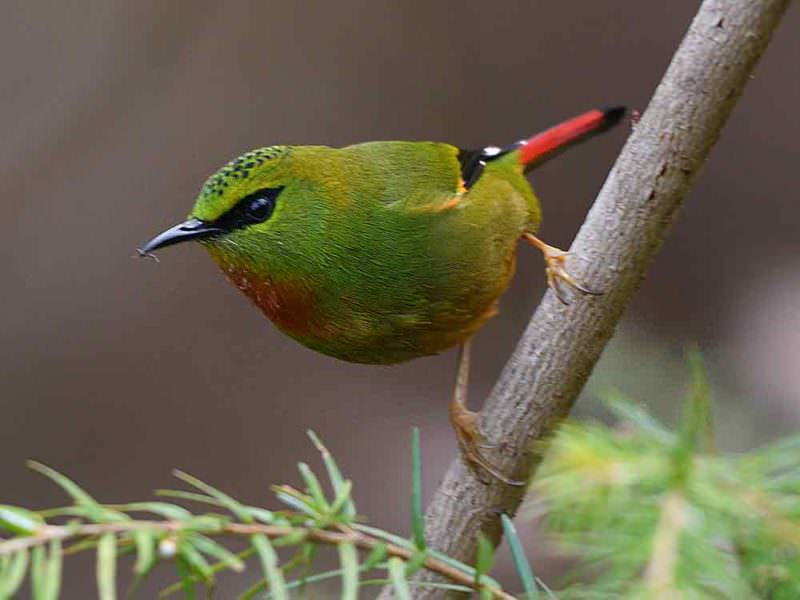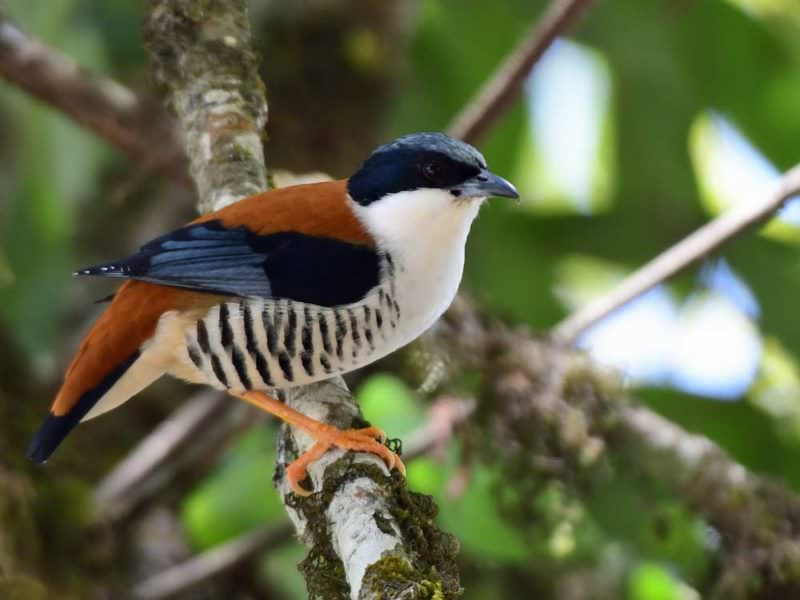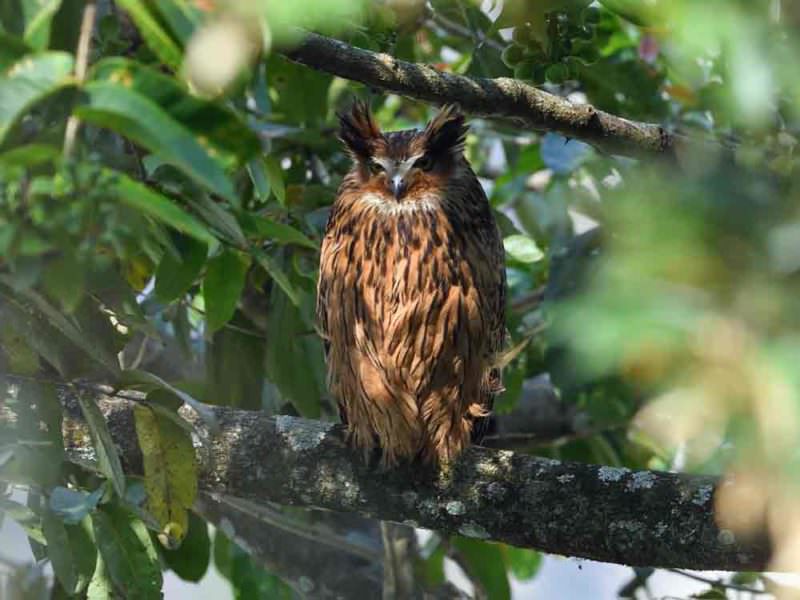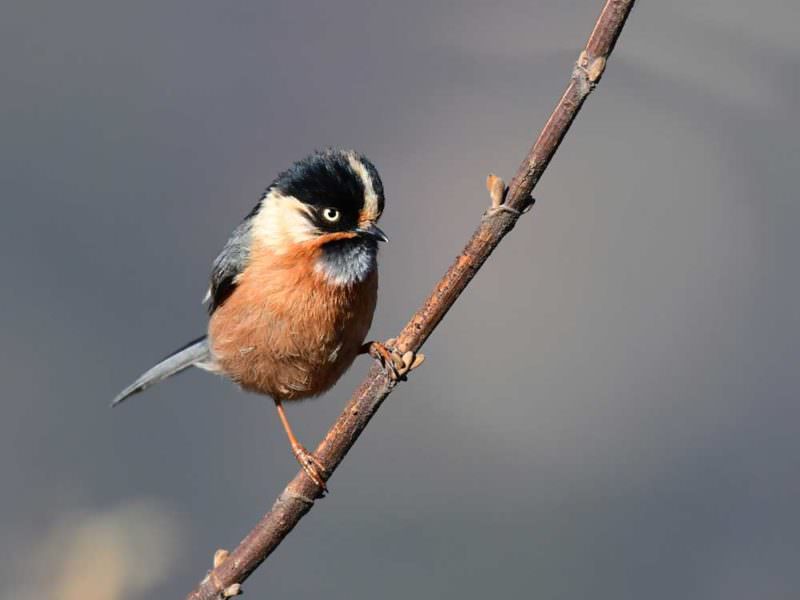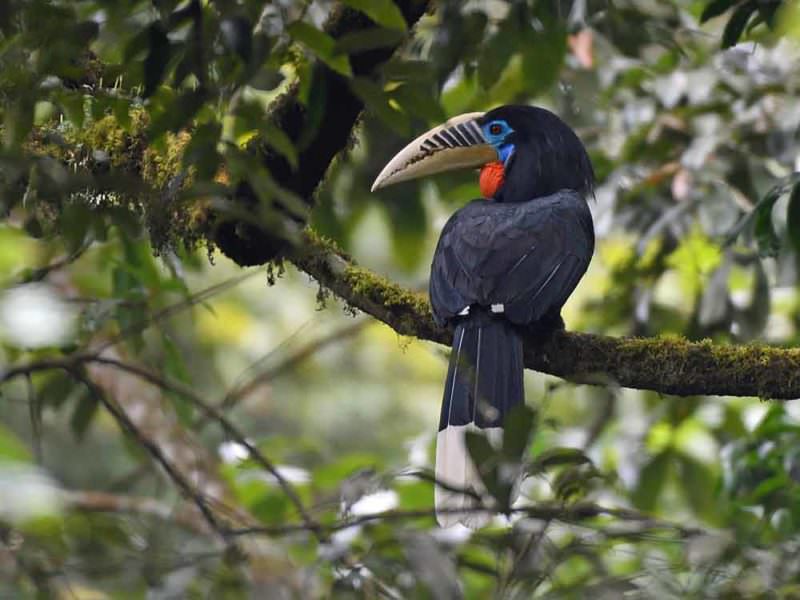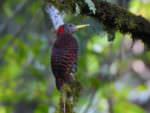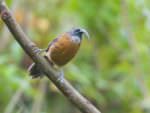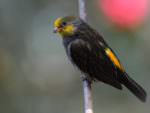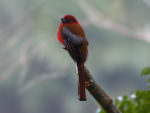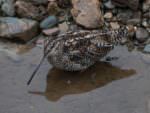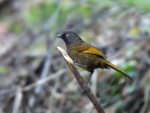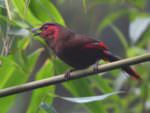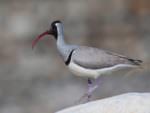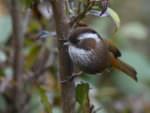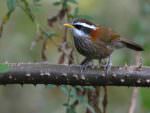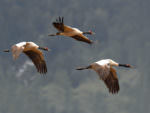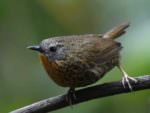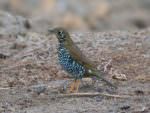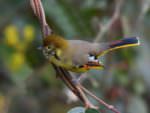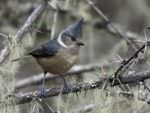Itinerary and price
Day 1: Flight to be organised by you
For help with your flight arrangements and to receive a no obligation quote, you can complete the enquiry form on our website or call 0800 280 8947 to speak to a flight advisor at StudentUniverse (in partnership with Gapyear.com), part of the Flight Centre Travel Group, a leading retailer of airfares and worldwide flights.
Day 2: Delhi
Meals: Payable directly today
You will be welcomed at Delhi International Airport by our representative and taken to check in at your hotel in Delhi. The check in time for most hotels is 12 noon, but sometimes earlier. The transfer from airport to your hotel is included in our price.
Depending on your flight arrival time it may be possible to visit Sultanpur Bird Sanctuary with a birding guide. We can arrange this for you and supply a supplement to include addition transport, service of a bird guide and entrance fee. One of the target species here is Sind Sparrow and you’ll see many wetland species, with a chance of Indian Courser.
Night at Hotel Almora
Day 3: Delhi - Guwahati - Samdrup Jongkhar and Deothang
Meals: Lunch and dinner
A transfer to Delhi domestic airport is included this morning. The internal flight (excluded from the price - expect the price to be around $85 one way) from Delhi to Guwahati is likely to be an early one. We can supply flight details which can be easily booked by you directly online.
Our representative will meet you at Guwahati Airport. From here we will drive to Samdrup Jongkhar (110kms/4 hours), stopping en-route at Garchawk garbage dumpsite where you can expect to see Lesser and Greater Adjutants (the latter of which is classed as endangered), Bronze-winged Jacana, Yellow-wattled Lapwing and many other species.
Crossing the border into Bhutan you will stay at Hotel Tashi Gasel, Samdrup Jongkhar (400m)
Day 4: Samdrup Jongkhar and Deothang
Meals: Breakfast, lunch and dinner
Today explore the forests of Samdrup Jongkhar and Deothang, a stretch of 25kms, full of tropical birding and wildlife excellence.
Expected species include Long-tailed Broadbill, Sultan Tit, Blue-eared Barbet, Grey-throated and Golden Babblers, White-bellied Erpornis, Large-tailed Nightjar, Emerald and Red-collared Doves, Oriental Pied, Great and Wreathed Hornbills, Greater Racket-tailed Drongo, White-browed Scimitar-Babbler, Lesser Necklaced Laughingthrush, Red-headed Trogon, Yellow-footed, Pompadour and Thick-billed Green Pigeons, Green and Chestnut-headed Bee-eaters, Crested Kingfisher, Yellow-bellied Warbler, Rufous-capped Babbler, Green-billed Malkoha, Oriental Honey-buzzard, Greater Coucal, Collared and Oriental Scops Owls; Greater Goldenback, Rufous Treepie, Black-naped Monarch, Chestnut-tailed Starling; Jungle, Hill and Great Mynas, Little Spiderhunter, Golden-fronted Leafbird, Indian Paradise Flycatcher, Red Junglefowl, Plain Flowerpecker, Red-throated Flycatcher, Siberian Rubythroat (rare), Asian Fairy Bluebird, Dollarbird, Black-crested Bulbul, Mountain Imperial Pigeon, Common Iora, and with a bit of luck the very rarely seen Blyth’s Kingfisher, Dark-rumped Swift and Black-backed Forktail.
Night at Hotel Tashi Gasel, Samdrup Jongkhar (400m)
Day 5: Deothang to Trashigang
Meals: Breakfast, lunch and dinner
Today drive (170kms) from Deothang to Trashigang along the sub-tropical forests of Morong and Orong village. Apart from excellent birding you will also enjoy the ever-changing landscape and the view across the Eastern Himalayas.
Expected species include White-tailed and Beautiful (rare) Nuthatches; Black-tailed Crake, Long-billed Thrush (rare), Mountain Tailorbird (rare), Red-headed Trogon, Whistler's and Grey-cheeked Warblers, Slaty-Blue, Little Pied and White-gorgeted Flycatchers (the latter is rare), Spotted Forktail, Aberrant Bush Warbler, Lemon-rumped Warbler, Rufous-throated Wren Babbler (rare), Spotted Elachura, Maroon Accentor (rare), Yellow-breasted Greenfinch, Long-tailed Sibia, Red-faced Liocichla, Blue-winged, Bhutan and Rufous-necked Laughingthrushes, Rufous-necked Hornbill, Silver-eared Mesia, White-throated Needletail, Grey Nightjar, Brown Shrike, Slender-billed Oriole, Bar-winged Flycatcher-Shrike, Ferruginous and Grey-headed Canary Flycatchers; Yellow-cheeked Tit, Himalayan and Black Bulbuls.
Night at Druk Deojung Resort, Trashigang (1500m)
Day 6: Trashigang to Yongkola
Meals: Breakfast, lunch and dinner
Today is an early start on our drive from Trashigang to Yongkola (130kms). We will reach Kore La for our first morning birding. This cool broad-leaved forest is full of birding excellence. After breakfast we will continue to Yongkola stopping along the famous Lingmethang road.
Expected species include Tawny Fish Owl, Himalayan Buzzard, Pallas’s Fish Eagle (rare), Oriental White Eye, Maroon Oriole, Fire-capped Tit, Ashy Wood Swallow, Bhutan Laughingthrush, Asian Barred Owlet, Rufous-bellied Niltava, Ultramarine and Little Pied Flycatchers, Blanford’s Rosefinch, Rusty-cheeked Scimitar Babbler, Himalayan Bulbul, Crested Bunting and Lesser Racket-tailed Drongo.
Night at Trogon Villa, Yongkola (1700m)
Days 7 and 8: Thrumshing La National Park
Meals: Breakfast, lunch and dinner
Two full days are spent exploring the bird-rich Thrumshing La National Park with many kilometres of habitat excellent for birds, flora and other wildlife. The area is considered to be one of the best birding hotspots in all of Asia.
Expected species include Satyr Tragopan (rare), Ward’s Trogon (rare), Rufous-throated Wren Babbler (a little known and endangered species), Hill Partridge, Rufous-bellied Eagle, Rufous-necked Hornbill (the forests of Bhutan are the stronghold for this impressive species), Speckled Wood Pigeon, Blue-bearded Bee-eater, Blue-fronted Robin (rare), Himalayan Wedge-billed Babbler, Grey-sided, Scaly and Blue-winged Laughingthrushes, Coral-billed Scimitar Babbler, the exquisite Yellow-throated Fulvetta (rare and virtually unknown elsewhere), Golden-breasted Fulvetta, Greater Rufous-headed and Black-throated Parrotbills (rarely seen), Pygmy Cupwing, Himalayan Treepie, Short-billed and Long-tailed Minivets, Hodgson’s Redstart, Mountain and Striated Bulbuls, Hill and Striated Prinias, Slaty-bellied and Gray-bellied Tesias, White-browed and Black-eared Shrike-babblers, Rusty-fronted Barwing, Blue-capped Rock Thrush, Lesser Yellownape, Collared Owlet, Yellow-bellied Fantail, Verditer, Pale Blue and White-gorgeted Flycatchers, Rufous-fronted, Yellow-browed and Yellow-cheeked Tits, Gray-hooded, White-spectacled, Chestnut-crowned, Broad-billed and Black-faced Warblers, Rufous-capped and Golden Babblers, Red-tailed Minla, Bar-throated Siva, White-naped and Black-chinned Yuhinas, Spot-winged Grosbeak, Crimson-breasted Woodpecker, Rufous-breasted Bush Robin, Scarlet Finch, Black-headed Shrike-babbler (rare), Slender-billed Scimitar Babbler (rare), Little Forktail, Nepal House Martin, Fork-tailed Swift and Scaly Thrush.
Night at Trogon Villa, Yongkola (1700m)
Day 9: Yongkola to Chummey
Meals: Breakfast, lunch and dinner
Yongkola to Chummey via Ura by pass (130km) will make for a fabulous day. Early morning birding along the Sengor Valley, looking for high altitude birds will, with some luck, reap great benefits. After breakfast we will continue to Chummey, crossing over Thrumshing La (3890m).
Expected species include Himalayan Monal (rare), Blood Pheasant, Satyr Tragopan (rare), Grey-crested, Coal, Yellow-browed and Black-browed Tits, Mrs Gould’s and Green-tailed Sunbirds, Ashy-throated, Lemon-rumped and Large-billed Leaf-warblers, Bar-winged Wren-babbler (rare), White-browed and Rufous-winged Fulvettas, Mountain Hawk-Eagle, Chestnut-bellied Rock Thrush, Snow Pigeon, Himalayan Forest Thrush (new split from Plain-backed Thrush), Dusky, Eye-browed and Black-throated Thrushes, White-collared Blackbird, Himalayan Bluetail, White-browed Bush Robin, Rufous-bellied Niltava, Rusty-flanked Treecreeper, Chestnut-crowned Laughingthrush and Brown Bullfinch.
Night at Chummey Nature Resort, Chummey (2800m)
Day 10: Chummey to Trongsa
Meals: Breakfast, lunch and dinner
The interesting drive from Chummey to Trongsa (60kms) will take us via Tharpaling Monastery for birding. After breakfast we drive over Yotong La at 3450m to Trongsa.
Expected species include Himalayan Monal, Himalayan Wood Owl (new split from Tawny Owl), Blood Pheasant, Snow Pigeon, Alpine Accentor, Red-billed Chough, White-bellied Redstart (rare), Godlewski Bunting (rare), Darjeeling Woodpecker, Stripe-throated Yuhina, White-winged Grosbeak, Himalayan Vulture, Himalayan Buzzard, Chestnut-headed Tesia, Crimson-browed Finch, Winter Wren, Dark-rumped Rosefinch, Scaly-breasted Cupwing, Golden-naped Finch, Brownish-flanked Bush Warbler, Red-headed Bullfinch and Streak-breasted Scimitar Babbler.
Night at Yangkhil Resort, Trongsa (2200m)
Day 11: Trongsa to Tingtibi
Meals: Breakfast, lunch and dinner
Trongsa to Tingtibi via Wangduegang and Shemgang (165kms). Birding along Chunjey Pang, Dangdung, Koshala, Wangduegang and Dakphai Valley.
Expected species include Yellow-rumped Honeyguide (rare), Pale Blue Flycatcher, Greater Yellownape, Black-throated and Striated Prinias, Large Niltava, Blue-capped Rock Thrush, Little Forktail, Striated Yuhina, Crimson Sunbird, Tickell’s Leaf Warbler, Lemon-rumped Warbler, Blue-throated Barbet, Rufous and Bay Woodpeckers, Large Hawk-Cuckoo, Rufous-necked Hornbill (rare), Lesser Racket-tailed Drongo, Ashy, White-throated and Black-crested Bulbuls, Fulvous-breasted Woodpecker, Streaked Spiderhunter, Lesser Necklaced Laughingthrush, Pin-tailed and Wedge-tailed Green Pigeons; Mountain Imperial Pigeon, Blue-naped Pitta (rare), Brown Hawk Owl (rare), Spot-bellied Eagle-Owl, Common Green Magpie and Emerald Dove.
Night at Hotel Twang, Tingtibi (700m)
Day 12: Tingtibi and Shemgang Road
Meals: Breakfast, lunch and dinner
We will spend the morning, exploring the rich bamboo forests of Tingtibi. After a hot picnic breakfast, we will continue birding along the Shemgang Road. Here we also have the chance to see the rare Golden Langurs in small groups.
Expected species include Rufous-throated and Chestnut-breasted Partridges (both rare), Barred Cuckoo-Dove, Blue-bearded Bee-eater, the amazing Rufous-necked and Great Hornbills, White-browed Piculet, White-hooded Babbler (found only in this area), Rufous-faced and Yellow-bellied Warblers, Pale-headed Woodpecker (very rare), Long-tailed Broadbill, White-tailed Robin, Silver-eared Mesia, White-browed Scimitar Babbler, the stunning Himalayan Cutia, Rufous-vented and Blue-winged Laughingthrushes (an impressive and elusive species), Rufous-winged and Nepal Fulvettas; White-naped, Black-chinned and White-bellied Yuhinas, Sultan Tit, Lesser Rufous-headed Parrotbill and the rare Beautiful Nuthatch and White-bellied Heron.
Night at Hotel Twang, Tingtibi (700m)
Day 13: Tingtibi to Trongsa
Meals: Breakfast, lunch and dinner
Tingtibi to Trongsa via Wangduegang by pass (130km). Birding along the Wangduegang Road.
Expected species include Himalayan Bulbul, Long-tailed Broadbill, Blue Rock Thrush, Blue-capped Rock Thrush, Rusty-cheeked Scimitar Babbler, Crested Bunting, Striated Yuhina, Crimson Sunbird, Spot-winged Starling (rare), White-crested Laughingthrush, Common Rosefinch, Bay Woodpecker, Grey-headed Parrotbill, Little Forktail, Black Eagle and Blue-winged Minla.
Night at Yangkhil Resort, Trongsa (2200m)
Day 14: Trongsa to Nobding
Meals: Breakfast, lunch and dinner
Trongsa to Nobding (75km), stopping for birds along Chendibji and Old Pele La road (3350m).
Expected species include Stripe-throated and Rufous-vented Yuhinas, Fire-tailed Myzornis, Crimson-browed Finch, Spot-winged Grosbeak, Brown and Great Parrotbills, Bhutan and Striated Laughingthrushes, Himalayan Cutia, Black-faced Warbler, Black-eared Shrike-babbler, White-throated Fantail, Solitary Snipe (rare) and Grey-sided Bush Warbler.
Night at Kuenphen Hotel, Nobding (2450m)
Day 15: Nobding to Punakha
Meals: Breakfast, lunch and dinner
Nobding to Punakha (45km). We will rise early to bird along the farm road of Dangchu village. After breakfast we continue to Punakha, stopping along Khelekha valley for birds.
In Punakha we will visit the magnificent Punakha dzong before driving to our hotel.
Expected species include White-throated and Rufous-chinned Laughingthrushes, Golden-throated and Great Barbets, Ward’s Trogon (rare), Barred Cuckoo Dove, Slender-billed Oriole, Blue-throated Flycatcher, Small Niltava, Wedge-tailed Green Pigeon, Scarlet and Short-billed Minivets, Lesser Yellownape, Yellow-rumped Honeyguide (rare), Crested Serpent Eagle, Black and Ashy Drongos, Red-billed Leiothrix, Ashy Wood Pigeon (rare), Fire-capped Tit, Pygmy Blue Flycatcher, Hoary-throated Barwing, Spotted Nutcracker, Ruddy Shelduck, Pallas’s Gull, Bar-headed Goose, Common Teal and Spot-billed Duck.
Night at Zhingkham Resort, Punakha (1500m)
Day 16: Punakha to Paro
Meals: Breakfast, lunch and dinner
Punakha to Paro (125km), stopping en-route at Menchuna village, Lampelri Botanical park and Dochu La (3150m) for birds and landscape views.
Expected species include Mrs. Gould’s and Green-tailed Sunbirds, Darjeeling Woodpecker, Brown Parrotbill, Common Hawk-Cuckoo, Russet Bush Warbler, Maroon-backed Accentor, Black-tailed Crake, Lemon-rumped and Chestnut-crowned Warblers; Fire-breasted Flowerpecker, Green Shrike Babbler, Yellow-billed Blue Magpie, Fire-capped Tit, Red-billed Leiothrix, Scarlet Finch, Speckled Wood Pigeon, Brown Parrotbill, Eurasian Jay, Mountain Hawk-Eagle, Eurasian Treecreeper, Ibisbill, Pied Wagtail, Blue Whistling Thrush, Grey-backed Shrike, Rosy Pipit, Plumbeous and White-capped Water Redstarts, and Brown Dipper.
Night at Hotel Olathang, Paro (2300m)
Day 17: Paro – Chele La – Paro
Meals: Breakfast, lunch and dinner
Early morning drive to Chele La (3,780m) for high altitude birding, after breakfast return to Paro. Option for those wishing to visit the famous Tigers Nest Monastery can skip the trip to Chele La and spend the day trekking to the monastery. The return hike to the temple takes 5 hrs.
Expected species: Kalij Pheasant, Himalayan Monal, Satyr Tragopan (rare), Blood Pheasant, Himalayan White-browed Rosefinch, Rufous-bellied Woodpecker, Collared Grosbeak, Spotted and Black-faced Laughingthrushes; Blue-fronted and Hodgson’s Redstarts, Fire-tailed Sunbird, Himalayan Bluetail, White-browed Bush Robin and Rufous-breasted Accentor.
Night at Hotel Olathang, Paro (2300m)
Day 18: Paro to Delhi
Meals: Payable directly
Today you will take a flight from Paro to Delhi. This Druk Air/Bhutan Airlines flight (excluded from the price - expect the price to be around $370 one way). We can supply flight details which can be easily booked by you directly online.
Tour ends
If you require an extra night in Delhi to link with international flights please let us know and we can provide you with a price and book this on your behalf.
Note: The order of visits and places visited may vary depending on weather and other factors.
Price per person on a twin share basis: US $4190
Single Room Supplement: US$ 25 per night, subject to room availability
Price includes:
Bhutan tourist visa and all taxes
Tour guide who is an excellent birder
All activities mentioned in the itinerary
All accommodation as mentioned on sharing twin room basis
All meals from lunch on Day 3 to dinner on Day 17
Tee/coffee and snacks
Bottled water throughout the trip
Ground transportation
All entrance fees for museums and parks
Price excludes:
All flights - international and internal (expect flights to cost around $85 for Delhi to Guwahati and $370 from Paro to Delhi depending on dates and exchange rates, so this is just a guide only)
Indian Tourist Visa (approx. $85)
Travel insurance (essential)
Laundry, phone calls and alcoholic drinks
Personal expenses
A few meals
Charges incurred as a result of circumstances beyond the control of Wild About Travel and our partners
Gratuity/tips
Trip grade: Moderate to strenuous hikes
You should prepare for certain factors of travel in Bhutan. A few of the most important are: elevation, winding mountain roads and uneven trek paths. Average elevation on this trip is 2,400m. Pass crossings may be up to 4,000m.
Insurance
We
strongly advise that your travel insurance policies include medical assistance and (helicopter) evacuation - we believe that it is ‘better to be safe than sorry!’ Should you decline to do so, we must state that
we cannot accept responsibility for expenses incurred, should you require medical attention/evacuation whilst on holiday with us.
Accommodation
It is our policy to use the best available accommodation in each location. All hotels and lodges we use are government approved and registered with the Tourism Council of Bhutan. If you signed up for a camping tour, we have our own camping crew who will set up camps, prepare hot meals and provide hot showers.
Temperature
| Average Temperature in Celsius Degree
APRIL |
| Place |
High |
Low |
| Samdrup Jongkhar |
34.2 |
25.1 |
| Trashigang |
28.3 |
17.0 |
| Yongkola/Mongar |
22.8 |
14.0 |
| Sengor |
15.4 |
2.3 |
| Bumthang/Chumey |
18.7 |
3.9 |
| Trongsa |
20.1 |
6.6 |
| Tingtibi |
29.1 |
28.3 |
| Phobjikha |
20.1 |
3.0 |
| Punakha |
26.2 |
12.9 |
| Thimphu/Paro |
17.6 |
4.6 |
WHAT TO TAKE WITH YOU
Clothing
This trip departs in April which is generally a dry and cool time of the year but you may encounter light rain or damp conditions. Evenings may be cool and you will certainly have many early morning starts so will need some warm layers. The key to being comfortable is to adopt a system of several layers rather than one item of bulky warm clothing. Sun hats are an essential item, with a wide brim and something to protect your neck. Temperatures can drop very quickly in the evening and early morning and at altitude and you may again need to put on a number of layers.
Clothing Checklist
|
Walking boot |
For hiking |
|
Training shoe |
For comfort in camp |
|
Waterproof jacket |
Best made with breathable, waterproof fabric |
|
Waterproof over-trousers |
Best made with breathable, waterproof fabric |
|
Lightweight downjacket or down gilet |
For colder evening/morning or in case of cold snap |
|
Trekking trousers |
Suggest two pairs, plus trousers to change into the evening |
|
T-shirts |
|
|
Long sleeved shirts |
Prevent sunburn on your arms and keep airborne biting insects at bay |
|
Thermal underwear |
You may like to take to change into this in the evening or have it to sleep in. |
|
Micro fleece |
|
|
Warm Jacket |
|
|
Thicker socks |
|
|
Thin socks |
|
|
Woolly hat or gloves |
For cold weather |
|
Sun hat |
With adequate protection for your neck |
|
Smart/casual clothes |
For air travel, in cities and for evenings in hotels |
Equipment and Accessories
|
Small day sack |
|
|
Sunglasses and retainers |
If you wear glasses, bring a spare pair |
|
Head torch or flashlight |
With a spare batteries |
|
Anti bacterial hand gel |
|
Electricity
Standard voltage in Bhutan is 220-240 volts. You will often find two pin razor type sockets in bathrooms. In rooms sockets are generally round-three pin variety (Indian standard which is larger than European) - but can also be European or British type sockets. Take a universal travel adaptor and if that still does not fit ask at hotel reception.
Baggage and hand luggage
Bhutan Airlines/Druk Airlines Baggage allowances are one cabin baggage (Max weight 10kg) and one checked-in-baggage (max 20kg).
- Small heavy articles can be carried in your day-sack or grip, which can go on as hand baggage. Note that most airlines only allow one item of hand baggage.
- Any excess baggage charge will have to be borne by yourself.
- Electrical equipment and lighters should be packed in your hold luggage along with any other items suggested by the airline – please read the guidance on your flight ticket as to what you can and cannot take on the flight, in hand luggage and in checked in luggage.

